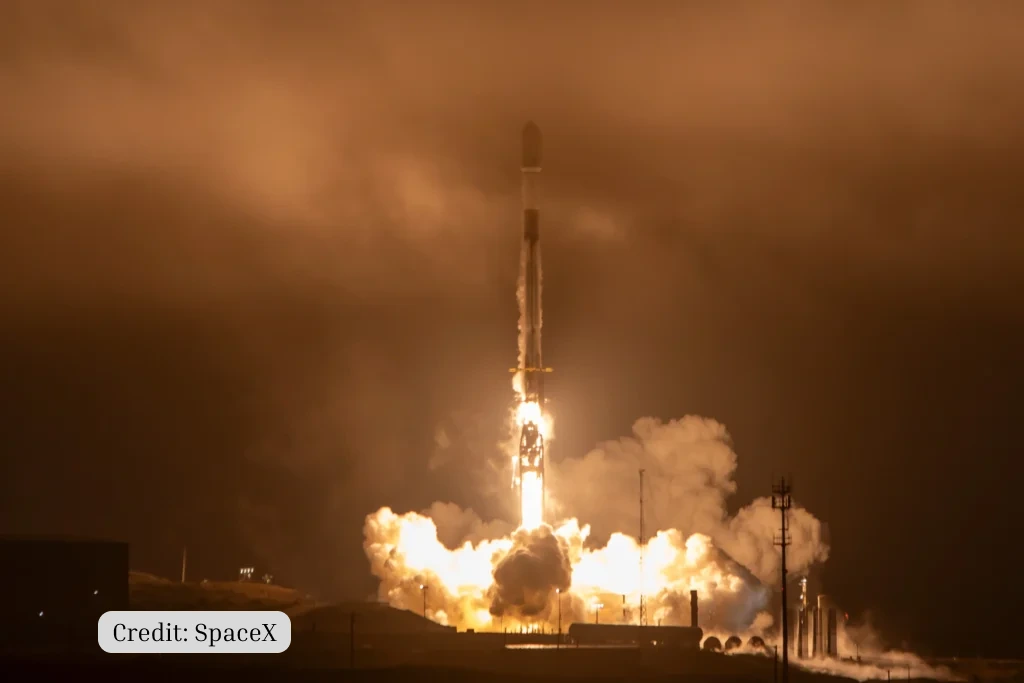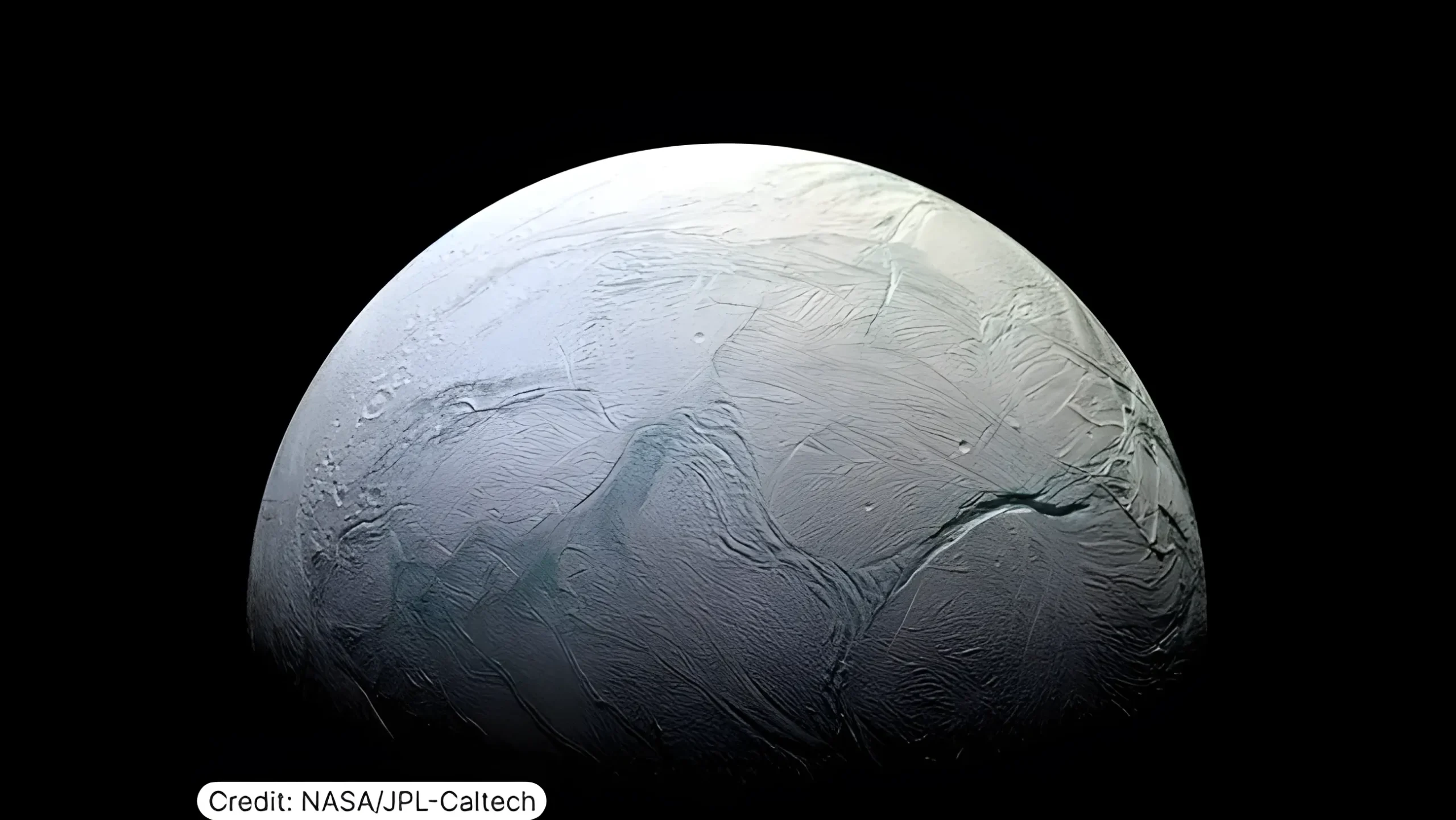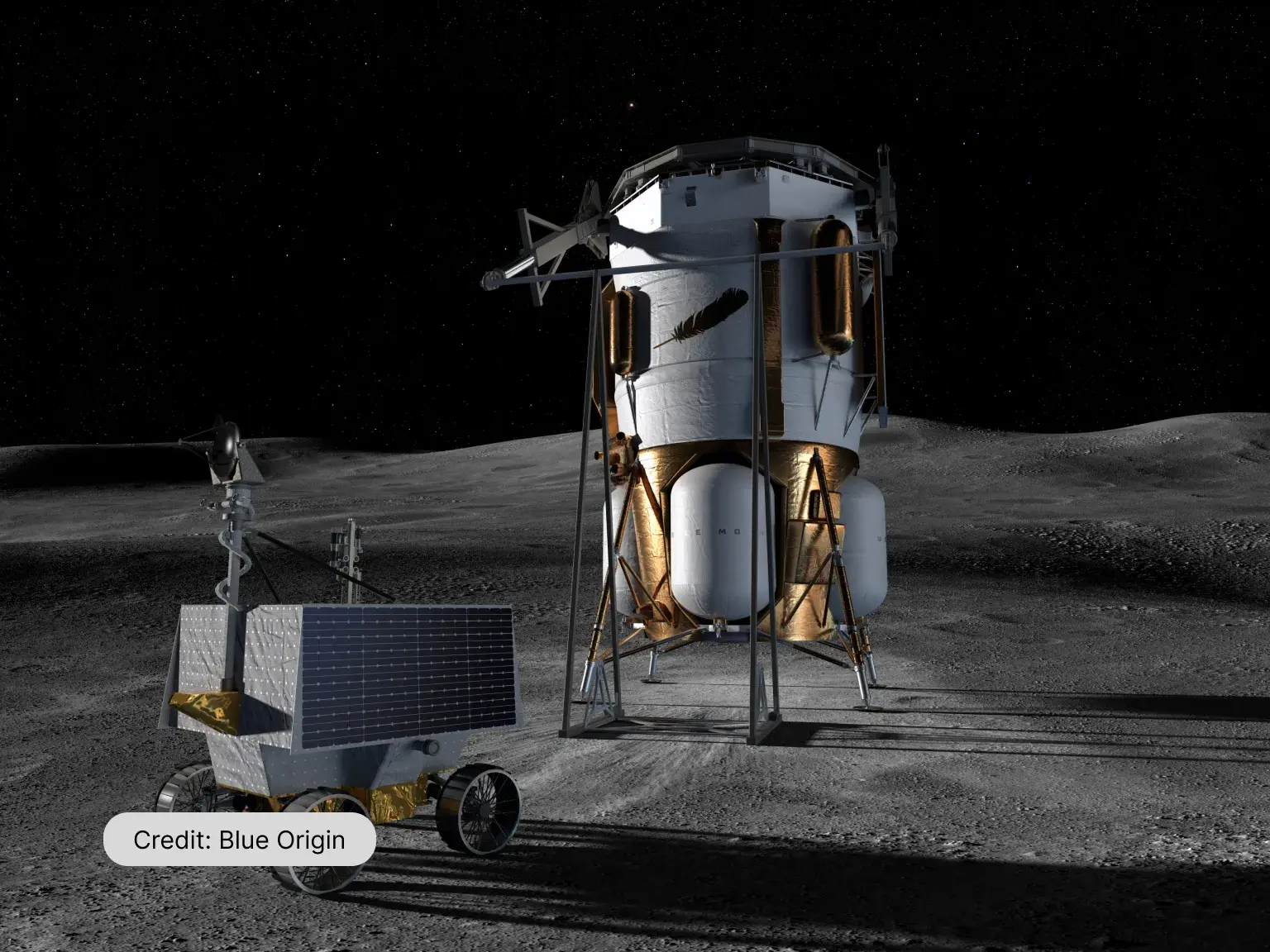SpaceX’s Starlink has redefined satellite broadband by deploying a vast and ever-growing constellation in low Earth orbit (LEO). Launched in 2019 with its first-generation (V1) satellites, Starlink initially delivered tens of gigabits per spacecraft and quickly evolved into a global service with millions of users.
Now, the program is entering its most ambitious phase yet: the transition to terabit-class V3 satellites, launched aboard Starship. These next-generation satellites, capable of adding up to ~60 Tbps per mission, more than 20× the capacity of current Falcon 9 launches, signal a massive leap in bandwidth, lower latency, and scalability.
This engineering evolution not only increases performance by orders of magnitude but also unlocks a new era of global connectivity and advanced applications.
Starlink Satellite Generations: V2 Mini vs. V2 Mini Optimized (2023-2025)
Original V2 Mini:
In February 2023, SpaceX introduced the V2 Mini, a smaller version of Starlink’s Gen-2 satellites made to fit on Falcon 9 rockets. The first launch put 21 of them into orbit.
- Mass: Approximately 800 kg (1,760 lb) each.
- Deployment: Typically launched in batches of 21 to 24 Minis per launch from Falcon 9, delivering roughly 2 Tbps of total capacity per mission.
- Throughput: Each V2 Mini satellite delivers ~96 Gbps of capacity, about four times (≈4×) the per-satellite bandwidth of V1.5.
Key capabilities:
- Propulsion: The V2 Mini uses Argon Hall-effect Thrusters (170 mN of thrust, ~2.4× more thrust and ~1.5× higher specific impulse than V1’s) for orbit raising and station-keeping.
- Backhaul: Feeder backhaul runs over E-band (71–86 GHz), shifting heavy gateway traffic off Ku/Ka user bands.
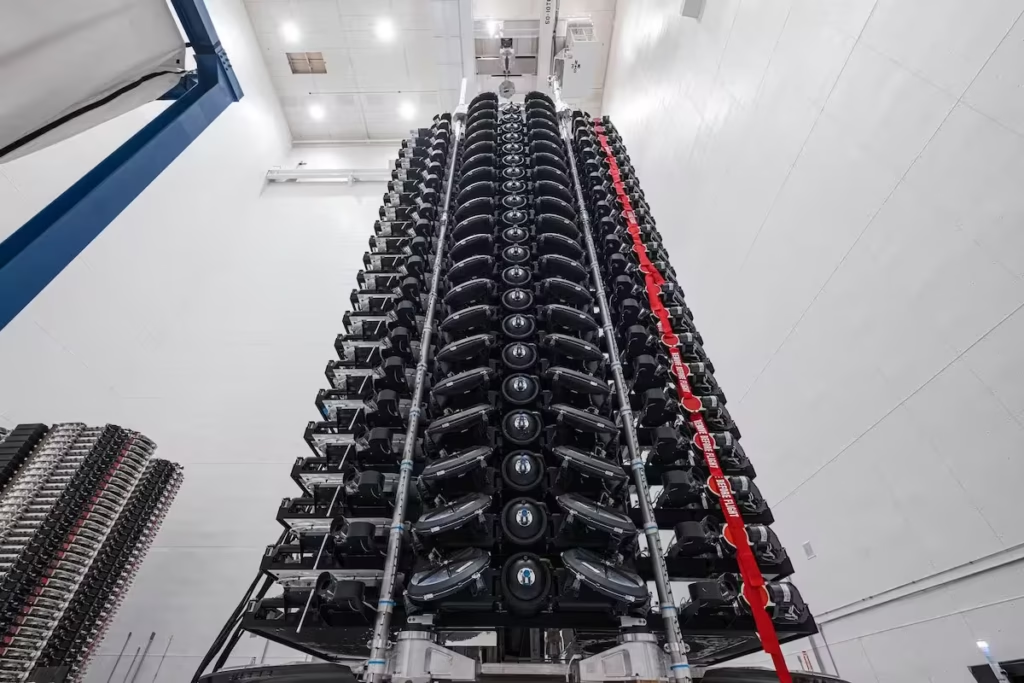
V2 Mini Optimized:
First launched in late 2024 or early 2025, these satellites are refined versions of the V2 Mini with significant design improvements.
- Mass Reduction: At ~575 kg (1,267 lb), about 225 kg (nearly 22%) lighter than the original V2 Mini.
- Deployment Efficiency: Lighter mass allows Falcon 9 to deploy up to 29 satellites per launch, six more than with the original design.
- Design Enhancements: Includes a new “Doppio” dual-band backhaul antenna, upgraded avionics, propulsion updates, and refined power systems.
- Visual Difference: Some units show a green-reflective underside compared to the blue finish of standard V2 Minis.
Summary: Both are part of the same Gen-2 family but represent distinct design strategies:
- The V2 Mini focused on capacity improvement constrained by Falcon 9 limits.
- The V2 Mini Optimized takes it further with mass savings and higher launch density, increasing deployment efficiency.
The original Starlink V2 Minis were replaced by the V2 Mini Optimized satellites in early 2025, giving SpaceX better launch capacity and stronger performance.
V3 Innovations: Terabit Downlink & 200 Gbps Uplink
Mass: ~1,900–2,000 kg, more than double the V2 Mini design, allowing room for larger solar arrays and more powerful payloads.
Throughput: >Each third-generation satellite is designed to provide over a terabit per second (1 Tbps) of downlink and over 200 Gbps of uplink; each Starship launch is projected to add ~60 Tbps to the network, more than 20× today’s per-launch additions.
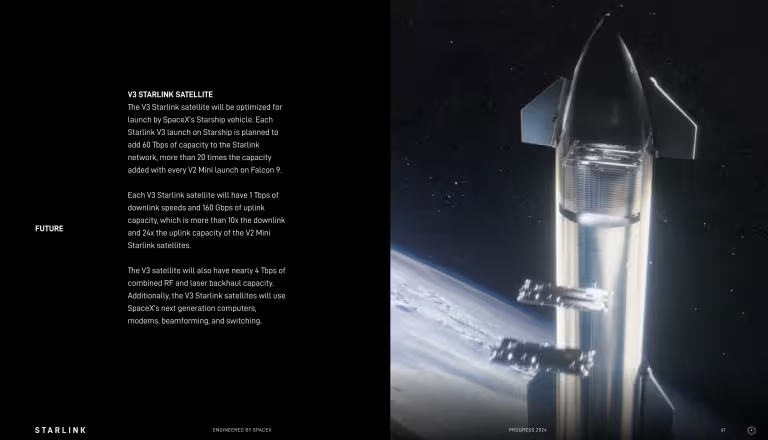
Backhaul: ~4 Tbps combined RF and optical interlinks, creating a robust orbital backbone capable of routing vast amounts of data between satellites and ground stations.
Features:
- Advanced phased-array beamforming to dynamically direct hundreds of spot beams to high-demand regions.
- Custom high-speed modem ASICs and onboard packet routing to process terabit traffic in real time.
- Direct-to-Cell works with existing LTE phones for text in 2024 and voice/data starting 2025, integrating as a roaming partner.
Orbit: Operates at a low altitude, noticeably lower than earlier generations, cutting signal travel distance. Starlink targets a stable 20 ms median latency and reports 25.7 ms median peak-hour latency in the U.S. as of June 2025
Starship vs. Falcon 9: Launch Capacity
| Metric | Falcon 9 (Original V2 Mini) | Starship (V3) |
|---|---|---|
| Satellites per launch | 21–24 | 60–120 |
| Per-satellite throughput | ~96 Gbps | >1 Tbps |
| Total added per launch | ~2 Tbps | 60Tbps |
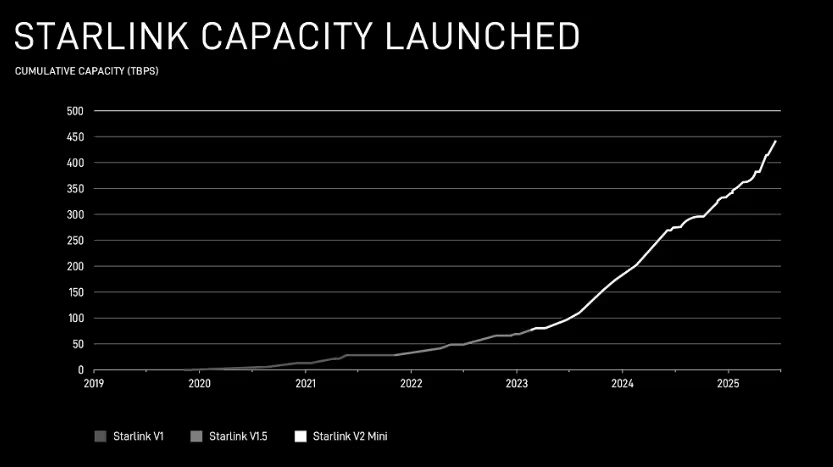
Falcon 9 today: ~21–24 V2 Minis per mission → ~2Tbps added per launch.
Starship for V3:
- Sized to carry dozens of V3 satellites per flight. With ~1 Tbps, a single Starship mission can inject ~60 Tbps to the network, 20×+ more than a Falcon 9 V2 Mini launch.
- Deployment method: SpaceX demonstrated the ‘PEZ-dispenser’ deployer by releasing eight Starlink mass simulators on Flight 10.”
Why this matters: Capacity growth shifts from linear to high‑volume. A handful of Starship flights can add capacity equal to years of Falcon 9 launches.
Starship’s impact on Starlink deployment
Falcon 9: Over the past year, Starlink launched more than 100 missions, adding over 2,300 satellites to its constellation with the current second-generation design. But the growth is still small-scale compared to the major leap expected from Starship.
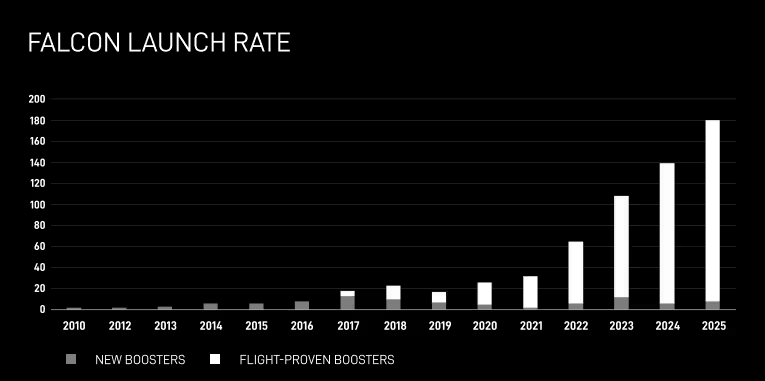
Starship (planned 2026): SpaceX is targeting the first half of 2026 to begin launching its third-generation satellites, and each new satellite is designed to provide over a terabit per second of downlink with over 200 Gbps of uplink; each Starship launch is projected to add ~60 Tbps, more than 20× today’s per-launch additions. So even a handful of flights in a year would dwarf the cumulative ~450 Tbps capacity added to date.
Bandwidth growth implications: As an illustration, ~60 Tbps per Starship mission means even a handful of flights could add hundreds of terabits within a year; by comparison, with the current Gen-2 fleet, Starlink reports deploying over 5 Tbps of capacity per week.
Real‑world notes on Starlink Mini in remote locations
Note: This was a single-user test under favorable conditions. Actual performance can vary depending on visibility, network load, and service plan.
Case Study: Ty Peck, CEO of Business Draft
A recent post on X (formerly Twitter) by journalist S.E. Robinson, Jr. (@SERobinsonJr) highlighted the experience of Ty Peck, CEO of Business Draft. Returning from a week-long camping trip in a remote location where phone and internet coverage were nonexistent, Peck used the Starlink Mini to stay online. He achieved over 200 Mbps download speeds, enabling him to:
- Join video calls with his team.
- Manage work tasks seamlessly from a riverside spot.
- Maintain reliable communication despite the lack of cellular infrastructure.
Speed Test Evidence: Instead of a screenshot, the original post embedded on X included a speed test result showing:
- Download speed: 235.11 Mbps
- Upload speed: 26.23 Mbps
- Ping: ~35 ms
Starlink Mini transforms outdoor and off-grid connectivity. By delivering broadband-class speeds in locations where no conventional service exists, it supports both work and leisure activities.
Note: The following section explores speculative interpretations and forward-looking scenarios. These are not confirmed facts.
Subsea Robotics and Deep-Sea Expeditions
V3’s capacity and sub-20 ms latency could enable a new range of marine and scientific applications that today face bandwidth and latency barriers:
- Real-time control of remotely operated vehicles (ROVs) performing inspection, maintenance, or emergency response hundreds of meters below the surface.
- High-definition video streaming from deep-sea expeditions gives scientists, educators, and the public immediate access to discoveries in remote ocean environments.
- Data-rich ocean monitoring from autonomous vehicles, transmitting continuous sensor readings on temperature, salinity, and ecosystem activity to support climate and biodiversity research.
- Climate research use cases, such as live-streaming distributed ocean sensor data collected from buoy networks and autonomous floats, provide continuous global insight into ocean health and dynamics.
- Deep-sea mining scenarios, where reliable satellite bandwidth might allow remote control centers onshore to operate heavy equipment in real time with improved safety and precision.
Conclusion
Starlink’s engineering leap from V2 to V3 satellites represents a shift from incremental capacity gains to terabit-scale performance. Each V3 satellite delivers >1 Tbps throughput, while Starship enables 20× capacity per launch compared to Falcon 9.
Confirmed results show improved latency and speeds, while speculative scenarios suggest applications in subsea robotics, maritime autonomy, and global bandwidth expansion. With Starship launches expected to accelerate deployment from 2026, the constellation is poised to reach multi-petabit scale, reshaping global connectivity.
